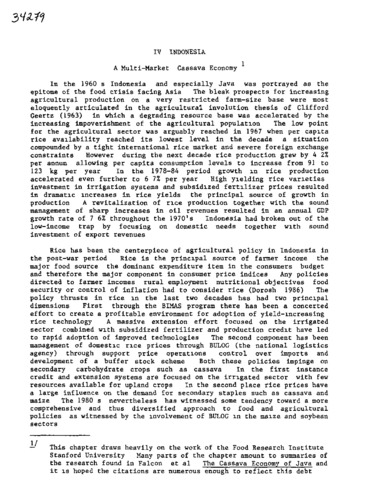Indonesia: a multi-market, cassava economy
Indonesia is the premier example of a well-integrated cassava economy, where the multiuse characteristics of the crop are fully exploited. Av. yields range from 2.3 to 19.5 t/ha, depending on cropping system and, above all, land type. The 5 major cassava- producing zones are characterized. Cassava-based systems provide a significant return on cash outlay. Cassava has been ignored by policy-makers despite the fact that (a) it has played a significant role in underpinning key policy objectives and in transmigration projects and that (b) historically, it has been an important export crop and is the 2nd most important calorie source in the diet. Income influences the distribution of cassava consumption; e.g., gaplek is a nonpreferred food consumed mainly by the poor. Except for starch, the tendency is for total cassava consumption to decline with income. The cassava starch market remains very dynamic. With the high income elasticity for krupuk, the potential in making high fructose sweeteners from cassava in upland areas, and increases in the textile, paper, and plywood industries, the demand for starch will continue to grow. Effective price transmission and adequately linked markets imply relatively competitive price formation throughout the country. (CIAT)

